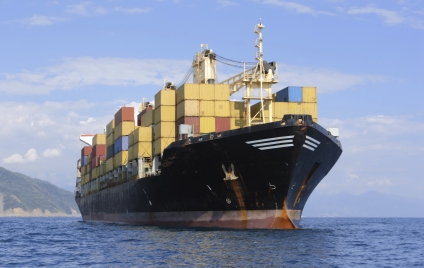India, with its vibrant and expanding consumer market of over 1.2 billion people, and with more than a quarter of the world's under 25s, is slated to be the world's 3rd largest economy by 2030. This makes India an extremely attractive market with broad-ranging opportunities for European exporters.
If you are looking to expand your business abroad, exporting is often a logical place to start. There is strong evidence to suggest that companies which export tend to grow faster, employ more people, and become more efficient and profitable than their non-exporting counterparts.
Where to start
To export successfully to India you will need to learn not just about India, but also about the logistics involved. For example you’ll need to understand export documentation, regulations and licensing, labelling and marking, tariffs and foreign currency management. While you’re doing your research, be sure to contact Indian Chamber of Commerce in the Czech Republic, CzechTrade, and other organisations who have the expertise and knowledge to guide you on the dos and don’ts of exporting to India. If you’re not sure if your product is right for India we can also help with in-county market research including competitor analyses and product feasibility assessments.
Organise your paperwork
Exporting will involve paperwork for transport, customs clearance, insurance and payments. According to the Indian Embassy in Czechia you will be typically be required to complete 11 documents to export to India. These must be dealt with in detail and may take more time and resources than you expect. At first you may want to hire a consultant to help with the paperwork whilst your export volumes grow and you build up the necessary in-house skills and resources.
Documentation required for exporting
The documents required will depend on the products you export to India. Apart from the documentation required for the transportation of goods, insurance and payment mechanism you may also need:
1. Clear written contract which covers at least the following:
- where and when the goods will be delivered
- who arranges transport and insuring of goods
- who handles customs procedures and pays any duties and taxes
- currency of payment and what payment method will be used
2. Export documentation such as
- Know Your Customer (KYC)
- GATT (General Agreement on Tariffs and Trade) /DGFT (Directorate General of Foreign Trade) declaration
- Purchase order/Letter of Credit
- Bill of Lading / Airway bill
- Bill of Entry
- Commercial Invoice and packing list
- Technical write up for specific goods if any
In addition to the documents mentioned above, documents may be required for the export of certain specific goods. Your customer in India should tell you what paperwork they require at their end and some of the paperwork can be arranged by your importer in India.
Export Licence requirements
Although the majority of goods can be shipped to India without an export licence, for certain goods the receiver should hold a special import permission or licence from the Government of India. A list of those can be found at the website of Directorate General of Foreign Trade.
Standards, certifications and labelling requirements
The standards followed in India are generally in line with international norms and most are harmonised with International Organisation for Standardization (ISO) standards. However, imports of some 109 products are subject to compliance with specified Indian quality standards. To remain compliant with the law, manufacturers of these products must obtain certification from Bureau of Indian Standards (BIS) before exporting such goods to India.
Labelling requirements in India require that all imported pre-packaged commodities, intended for direct retail sale, must carry the following declarations on the label:
- Name and address of the registered importer.
- Generic or common name of the commodity packed for import.
- Net quantity in terms of standard unit of weights and measurement – in metric.
- Month and year of packaging in which the item is manufactured, packed or imported.
- Maximum retail sales price (MRP) at which the goods, in packaged form, may be sold to the end consumer.
It is important to remember that consignments to India should be appropriately packed. Packages may receive heavy handling and be left in the open air for longer than anticipated. Remember much of India has a hot and humid climate, as well as seasonal extremes such as the Monsoons.
Tariffs and taxes
The Central Board of Excise and Customs provides information on Indian customs tariffs. India’s current customs regulations are guided by the Export Import Policy of 2012 to 2017. In addition to customs duties, a 1% handling fee is imposed.
Indian customs regulations allow:
- Temporary import of goods into India with drawback of some customs duty possible.
- Import of goods for use or display at exhibitions and trade fairs, subject to certain conditions.
Countervailing duty (CVD), Customs Education/CESS and Special additional Duties may apply.
Selling and Distribution
Of course before you start exporting to India, you will need to make a few fundamental choices about selling and distribution. There are four main ways in which to sell your product or service: selling direct, selling through local agents or distributors, contractual methods and setting up an overseas site.
An agent is an individual or firm you employ to sell your product or service. A distributor, on the other hand, buys your product from you and then sells it on to the end users. It is important to find the right representative, who is familiar with the local market and can help you find customers, distribution channels and handle documentation. In addition to market research Indian Chamber of Commerce the Czech Republic also offers an Introductions service where we can help you identify and qualify relevant contacts in the Indian market. For more information on our Introductions service please contact us through our contact form.





